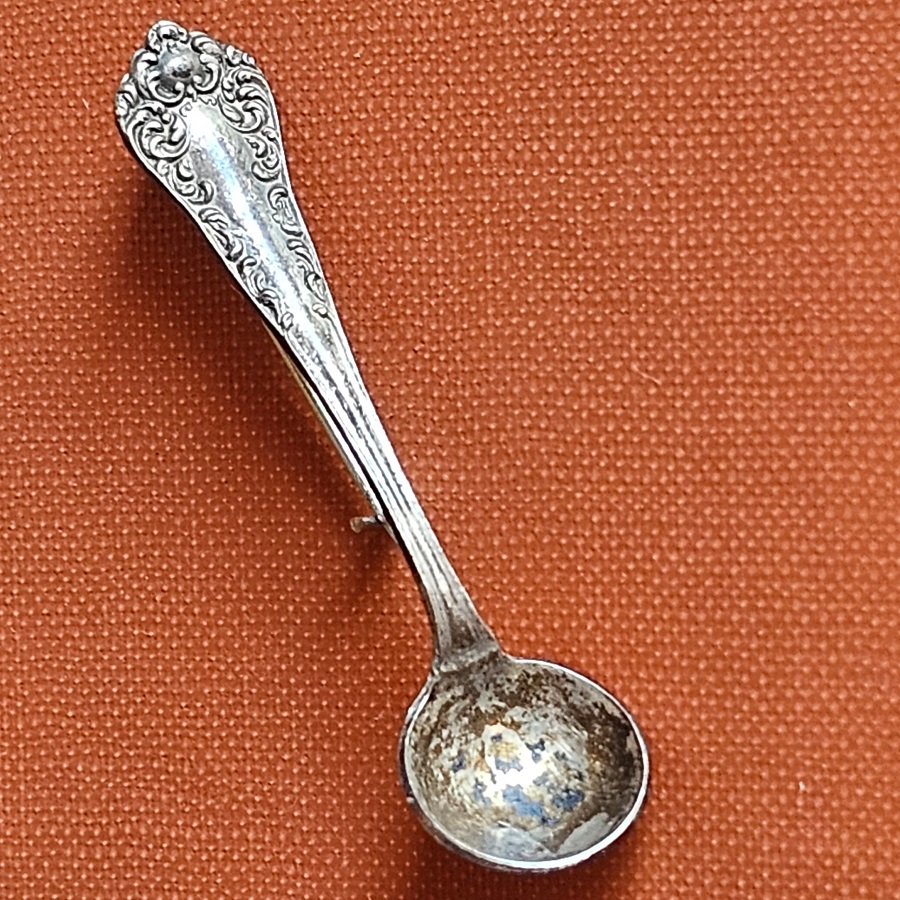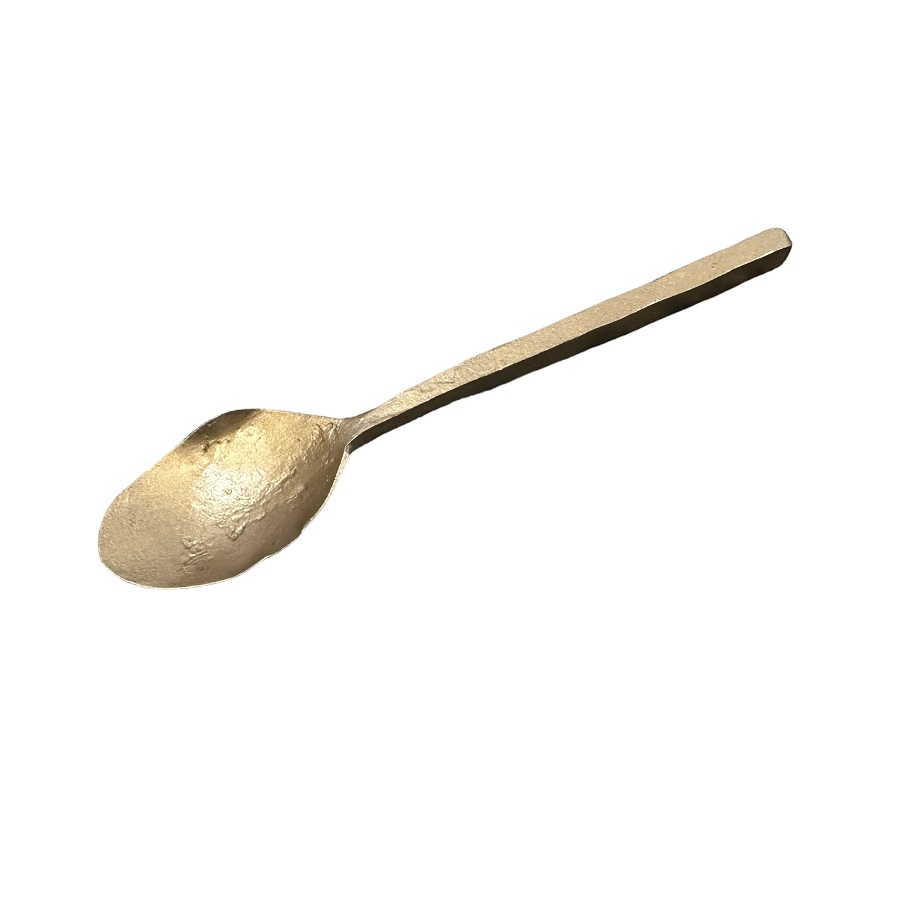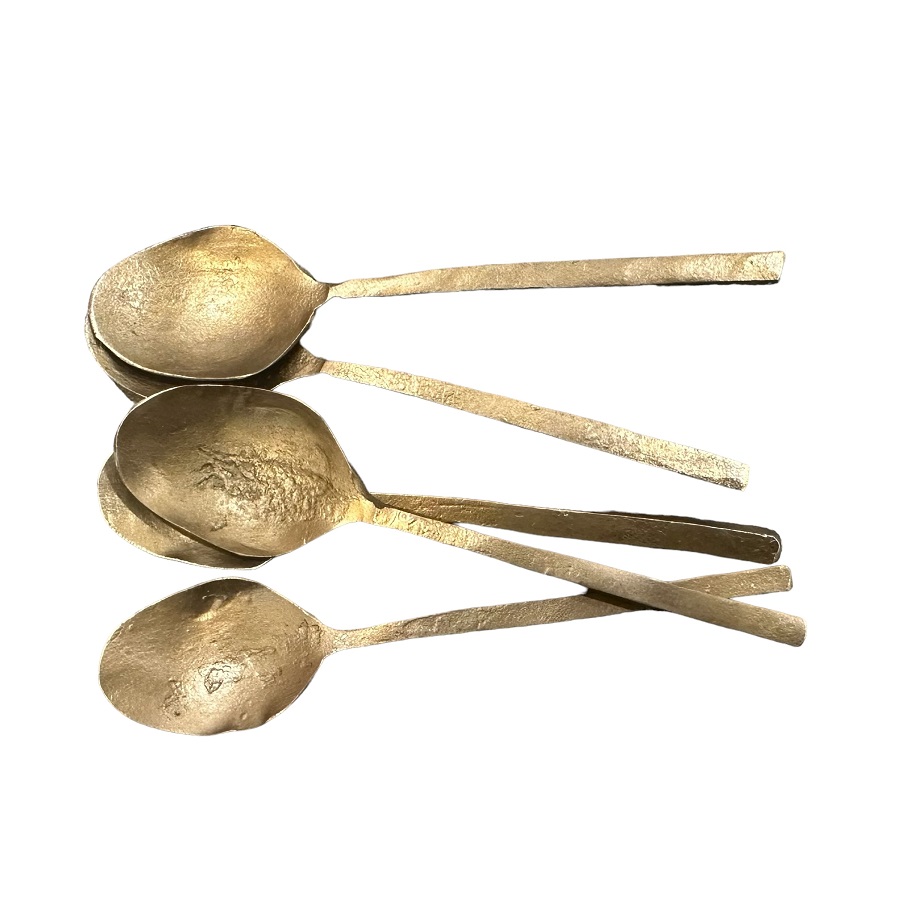Introduction
The art of fine dining is a symphony of flavors, textures, and presentations that come together to create an unforgettable culinary experience. In this intricate dance of gastronomy, even the smallest details matter—down to the seemingly insignificant salt spoon. This diminutive utensil, often overlooked, holds a significant place in the realm of haute cuisine, symbolizing not just a tool for seasoning but an embodiment of elegance and refinement.

The Origin and Evolution of the Salt Spoon
The use of a dedicated salt spoon can be traced back to medieval Europe when salt was a precious commodity, reserved for the elite. It was often kept in ornate containers known as salt cellars or salt pigs, and a small spoon was provided for guests to portion out the valuable seasoning. As time progressed, these spoons evolved from being purely functional to becoming decorative elements on the dining table, crafted from materials like silver, gold, mother-of-pearl, or porcelain, and adorned with intricate designs.
The Purpose and Etiquette
In modern fine dining, the salt spoon retains its role as a tool for precise salting, allowing diners to add just the right amount of salt to enhance the flavor of their dish without overpowering it. Its miniature size encourages moderation, reminding us of the adage “less is more.” Proper etiquette dictates that one should take a small pinch of salt using the spoon and sprinkle it gently over the food, never dipping the spoon directly into the salt cellar after it has touched the food, to preserve the purity of the salt.
The Aesthetics of Presentation
Fine dining is as much about aesthetics as it is about taste. A beautifully crafted salt spoon adds an element of sophistication to the table setting, complementing the overall visual appeal. Its delicate form and unique design become part of the table’s decoration, reflecting the establishment’s attention to detail and commitment to excellence. In high-end restaurants, you might find salt spoons that are carefully selected to match the dinnerware or even customized to fit the theme or concept of the meal.
The Psychological Impact
Using a salt spoon also imparts a sense of ritual and ceremony to the dining experience. The act of carefully selecting and applying the seasoning can heighten the anticipation of the flavors to come, engaging all the senses. It’s a subtle reminder to slow down and savor each moment, enhancing the overall enjoyment of the meal. For some, the use of such a specialized utensil can evoke feelings of luxury and indulgence, making even the simplest dish seem more exquisite.
Early Origins
The use of spoons specifically designed for salt can be traced back to medieval Europe, where salt was not only a vital ingredient for flavoring food but also a precious commodity. Due to its value, salt was often kept in ornate containers known as salt cellars or salters, which were placed at the center of dining tables. These cellars required small spoons for portion control and to maintain hygiene, leading to the birth of the first salt spoons.
These early spoons were typically made from materials like wood, bone, or simple metals like pewter, reflecting their practical purpose. However, even in these rudimentary forms, they sometimes featured basic decorative elements, indicating an early recognition of their aesthetic potential.
Renaissance and Baroque Eras
As Europe entered the Renaissance and later the Baroque periods, a heightened focus on art and luxury trickled down to everyday objects, including tableware. The salt spoon evolved accordingly, with artisans crafting them from more precious materials such as silver and gold. Intricate engravings, filigree work, and gemstone embellishments adorned these spoons, transforming them into miniature works of art that reflected the wealth and status of their owners.
Victorian Era and the Industrial Revolution
The Victorian era saw a surge in the popularity of decorative salt spoons, coinciding with the rise of the middle class and a fascination with elaborate table settings. Mass production techniques born out of the Industrial Revolution made it possible to produce intricate designs at a more affordable cost, making decorative salt spoons accessible to a broader audience.
Materials ranged from silver to silver plate, and occasionally, precious metals and stones for the elite. Collecting unique and exotic salt spoons became a popular pastime among the affluent, further fueling their artistic development.
Modern Times and Contemporary Design
With the advent of the 20th century, dining habits shifted towards more casual settings, and the formal rituals around salt usage diminished. However, rather than disappearing, the decorative salt spoon found new life as a collectible item and a symbol of nostalgic elegance. Art Deco and mid-century modern designs introduced sleeker, minimalist forms, appealing to changing tastes while still celebrating craftsmanship.
Some contemporary designers incorporate unconventional materials like recycled glass or repurposed metals, infusing old traditions with a modern, eco-conscious twist.
Moreover, as we’ve seen a resurgence of interest in artisanal products and a return to formal dining experiences, the decorative salt spoon has regained some of its former glory.
Culinary Precision and Personalization
From a culinary perspective, the salt spoon empowers diners to personalize their dining experience according to their taste preferences. Different dishes may require different levels of seasoning, and a small spoon allows for adjustments that cater to individual tastes. Moreover, it enables chefs to serve dishes lightly seasoned, trusting their patrons to add salt as needed, preserving the intended balance of flavors.
Material Matters
- Stainless Steel: Durable, easy to clean, and resistant to corrosion, stainless steel is a practical choice for everyday use. It offers a sleek, modern look that complements most kitchenware.
- Silver or Silver-Plated: For a more traditional and luxurious feel, silver or silver-plated spoons add a touch of class to any dining setting. They require more maintenance to prevent tarnishing but can last for generations with proper care.
- Ceramic: Available in various colors and designs, ceramic spoons offer a unique and artisanal touch. They’re perfect for adding a pop of color or pattern to your table setting but may be more fragile than metal options.
- Wood: Wooden spoons provide a natural and warm feel, ideal for rustic or eco-friendly themes. They don’t conduct heat or cold, making them comfortable to handle.
- Glass or Crystal: These options bring a sense of sophistication and can refract light beautifully. They require delicate handling due to their fragility.
Size and Shape
- Compact: A small spoon, usually around 2-3 inches in length, is perfect for individual salt cellars or pinch bowls. It allows for precise control over seasoning.
- Long Handle: If you plan to use the spoon in deeper containers or want to reach across dishes without contaminating the food, a spoon with a longer handle would be suitable.
-
Shallow Bowl vs. Deep Bowl: A shallow bowl is better for pinching small amounts of salt, while a deeper one can hold more and is useful for larger grains like rock salt
Conclusion
In the intricate world of fine dining, the salt spoon embodies the essence of refinement, tradition, and personalization. More than a mere instrument for dispensing salt, it serves as a testament to the meticulous care that goes into crafting a memorable dining experience. From its historical roots to its contemporary applications, the salt spoon stands as a quiet symbol of the delicate artistry inherent in haute cuisine, reminding us that sometimes, the smallest details make the grandest impressions.



